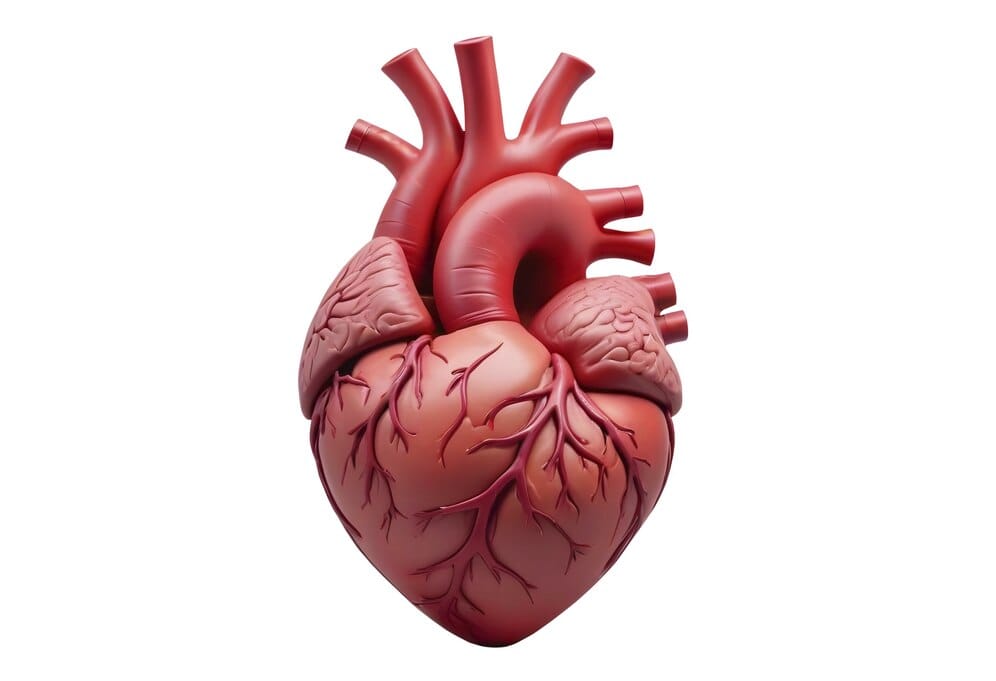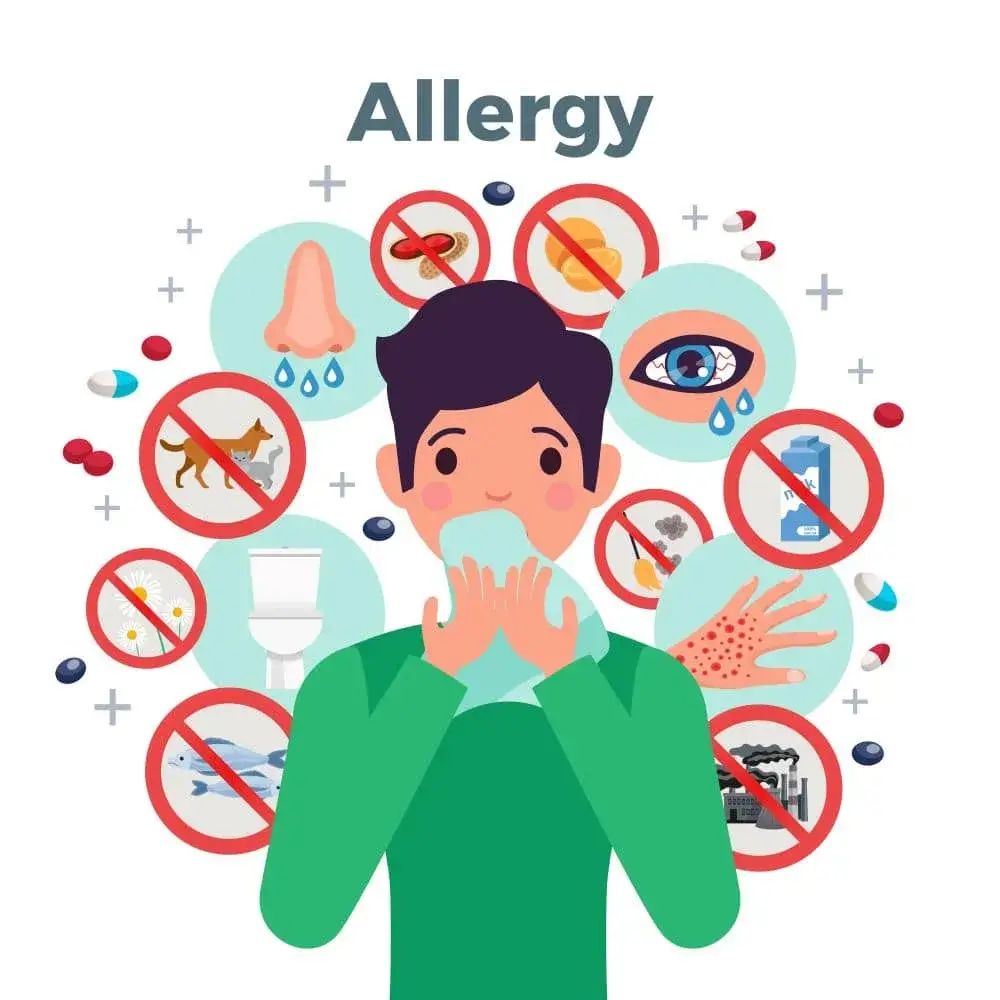Heart: The Vital Organ of Life
The heart, a powerful muscular organ, is the core of your cardiovascular system and essential for your survival. It operates tirelessly, ensuring your body receives the oxygen and nutrients it needs while eliminating waste. This intricate process keeps every cell in your body functioning optimally. However, various conditions can disrupt this system, affecting the heart’s ability to perform its critical role.
Table of Contents
What is the Heart ?
- The heart is a compact yet mighty organ, roughly the size of your fist, designed to pump blood efficiently throughout your body. Composed of muscle and connective tissue, it serves as the engine of your circulatory system.
- Within this organ are four chambers that work in perfect harmony to manage blood flow. Electrical impulses generated by your body make your heart beat, propelling blood through these chambers. Meanwhile, your brain and nervous system orchestrate its operations, ensuring it adapts to your body’s changing needs.
How Does the Heart Work,?
- At its core, your heart functions as a pump, circulating blood to sustain life. Blood delivers oxygen and vital nutrients to your cells while removing carbon dioxide and other waste products, which other organs then expel from your body.
The heart’s responsibilities don’t stop there:
- Regulating Heart Rhythm and Speed: It adjusts its rhythm and rate depending on your activity, stress levels, and rest periods.
- Maintaining Blood Pressure: The heart ensures stable blood pressure, a critical factor in overall health.
To perform these tasks, the heart collaborates with two key systems:
- Nervous System: Acts as a control center, instructing your heart to slow down during rest or speed up in response to stress or physical exertion.
- Endocrine System: Hormones released by this system influence blood vessel dilation and constriction, directly affecting blood pressure. Additionally, thyroid hormones can adjust your heart rate.
- Understanding the heart’s vital role emphasizes the importance of keeping it healthy. Lifestyle choices, regular check-ups, and an awareness of potential conditions are all essential steps in preserving the health of this incredible organ.

Anatomy of the Heart: Understanding Its Function and Structure
What Are the Parts of the Heart?
- The heart is a marvel of biological engineering, functioning much like a well-constructed building. Each part has a specific role in ensuring blood flows efficiently through your body. Its structure includes walls, chambers, valves, blood vessels, and an electrical conduction system, all working in harmony.
Heart Walls: The Muscular Engine
- The walls of your heart are a powerhouse, coordinated contraction and relaxation to pump blood. These walls are divided into two sides—left and right—by a muscular partition called the septum.
The heart wall consists of three distinct layers:
- Endocardium: The smooth, inner lining that ensures seamless blood flow.
- Myocardium: The thick, muscular middle layer responsible for pumping action.
- Epicardium: The outermost layer offering protection, which is also part of the pericardium—a sac that surrounds the heart. The pericardium produces lubricating fluid to prevent friction with nearby organs.
Heart Chambers: The Rooms of Your Heart
The heart has four chambers that work like rooms, each with a specific task:
- Right atrium: Receives deoxygenated(without oxygen) blood from the body through the superior and inferior vena cava and passes it to the right ventricle.
- Right Ventricle: Pumps this blood to the lungs via the pulmonary artery for oxygenation.
- Left Atrium: Accepts oxygen-rich blood from the lungs through the pulmonary veins and transfers it to the left ventricle.
- Left Ventricle: The strongest chamber, it pumps oxygenated blood to the entire body through the aorta.
Heart Valves: The Doorways of Circulation
Valves in your heart function like doors, ensuring blood flows in the correct direction and preventing backflow.
Atrioventricular (AV) Valves:
- Tricuspid Valve: Vested(Located) between the right ventricle and the right atrium.
- Mitral Valve: Found between the left ventricle and left atrium.
- Semilunar (SL) Valves:
- Aortic valve: Controls (manages) blood flow from the left ventricle to the aorta.
- Pulmonary valve: Conducts blood flow from the right ventricle to the pulmonary artery.
Blood Vessels: The Heart’s Plumbing System
Blood vessels serve as pathways for blood to travel to and from the heart.
- Arteries: Carry oxygenated blood to the tissues, except the pulmonary arteries, which carry deoxygenated blood to the lungs.
- Veins: Return oxygen-depleted blood to the heart.
- Capillaries: Tiny vessels where oxygen and nutrients exchange with waste products in tissues.
Coronary Arteries:
- These vessels supply oxygen and nutrients directly to the heart muscle. Key arteries include:
- Left Coronary Artery (with branches like the circumflex and left anterior descending arteries).
- Right Coronary Artery (RCA).
Electrical Conduction System: The Heart’s Power Grid
Your heart’s rhythm and pace are regulated by an electrical system, ensuring it beats in a coordinated manner. This system includes:
- Sinoatrial (SA) Node: The natural pacemaker that initiates(begin) the heartbeat.
- Atrioventricular (AV) Node: Passes signals from the atria to the ventricles.
- Bundle of His and Purkinje Fibers: Ensure the ventricles contract effectively.
Where Is Your Heart Located?
- Your heart is located in the middle of your chest, tilted slightly to the left, behind the sternum and between your lungs. It’s protected by your rib cage, with the left lung slightly smaller to accommodate its position.
How Does the Heart Look and Measure Up?
- Shaped somewhat like an upside-down pyramid with rounded edges, the heart connects to the body via large blood vessels. While sizes vary, an average adult heart weighs around 10 ounces and is roughly the size of a fist.
- Understanding the heart’s anatomy reveals just how intricate and essential this organ is to life. By learning about its structure, we can better appreciate its role and the importance of keeping it healthy.
Heart Conditions and Disorders: What You Should Know
- Heart conditions are among the most common and serious health issues affecting millions worldwide. Heart disease is the leading cause of death in the United States alone. Understanding these conditions, their symptoms, and available treatments can help you take proactive steps toward maintaining a healthy heart.
Common Heart Conditions:
Several disorders can impact your heart’s ability to function properly. Some of the most common ones include:
- Arrhythmia: An abnormal heartbeat that may be too fast, irregular , or too slow .
- Cardiomyopathy: A condition where the heart muscle becomes unusually thick, enlarged, or stiff, affecting its efficiency.
- Congestive heart failure: When the heart becomes so weak or stiff that it cannot pump blood effectively throughout the body.
- Coronary Artery Disease: Narrowing of the coronary arteries due to plaque buildup, which reduces blood flow to the heart.
- Diabetes: High blood sugar levels can increase the risk of heart disease and damage blood vessels.
- Heart Attack (Myocardial Infarction): A sudden blockage in a coronary artery that deprives part of the heart muscle of oxygen.
- Heart Valve Disease: Malfunctioning valves that either don’t close properly or obstruct blood flow.
- High Blood Pressure: Excessive force of blood against artery walls, which strains the heart over time.
- High Cholesterol: Excess fats in the blood that can lead to artery blockages.
- Pericarditis: Inflammation of the pericardium, which is the protective layer around the heart.
Recognizing Symptoms of Heart Conditions:
- Early detection of cardiac problems is the key to effective treatment. Common signs and symptoms include:
chest pain or discomfort.
Palpitations (feeling like your heart is beating fast).
Dizziness or lightheadedness.
Shortness of breath, especially during physical activity.
Swelling in the legs, ankles, or feet.
- If you experience any of these symptoms, it’s crucial to consult a healthcare provider.
Tests to Check Heart Health:
To diagnose heart conditions, doctors rely on a variety of tests, including:
- Blood Pressure Measurement: Determines if your blood pressure is within a healthy range.
- Electrocardiogram (EKG): Measures the heart’s electrical activity to detect irregularities.
- Echocardiogram: Uses ultrasound to visualize the heart’s structure and function.
- Chest X-Ray: Provides an image of the heart and lungs to identify abnormalities.
- Blood Tests: Detect markers of heart damage or risk factors like cholesterol levels.
- Cardiac catheterization: Evaluated blood pressure(BP) and flow in the heart.
- CT scan: Provides detailed images of the heart and surrounding structures.
- Heart MRI: Provides a detailed look at heart tissues and function.
- Stress Test: Assesses how well your heart performs under physical stress.
Treatments for Heart Conditions:
- Managing heart conditions involves a combination of lifestyle changes, medications, and medical interventions. Common treatment options include:
- Medications: These may help lower blood pressure, reduce cholesterol, or prevent blood clots.
- Lifestyle Modifications:
Adopting a heart-healthy diet rich in fruits, whole grains , and vegetables.
Incorporating regular physical activity.
Reducing stress and quitting smoking.
- Medical Devices:
Pacemakers to regulate heartbeat.
Implantable defibrillators to prevent sudden cardiac arrest.
- Procedures:
- Catheter Ablation: Targets and destroys abnormal heart tissue causing the arrhythmias.
- Angioplasty: Opens up narrowed or blocked arteries.
- Surgeries:
- Coronary Artery Bypass Surgery: Creates a new pathway for blood around blocked arteries.
- Valve Replacement: Repairs or replaces faulty heart valves.
Take Control of Your Heart Health:
- Understanding the conditions and disorders that affect the heart is the first step toward prevention and effective management. By staying informed, adopting healthy habits, and seeking timely medical care, you can protect this vital organ and lead a healthier life.
Care for Your Heart: Steps to a Healthier Life
- Maintaining a healthy heart is one of the best ways to ensure a long, active, and vibrant life. Whether you’re managing an existing condition or looking to prevent heart issues, taking intentional steps toward heart health can make all the difference.
How to Keep Your Heart Healthy:
- If you’ve been diagnosed with a heart condition, following your healthcare provider’s treatment plan is essential. This includes taking prescribed medications correctly and consistently. Alongside medical care, adopting heart-healthy habits can significantly improve your overall well-being.
Key Lifestyle Changes for Heart Health:
- Achieve and Maintain a Healthy Weight
- Carrying extra weight puts extra strain(pressure) on your heart. Work with your healthcare provider to determine a weight goal that’s right for you.
- Moderate Alcohol Consumption
- If you drink alcohol, do so in moderation. Too much alcohol can raise blood pressure and lead to other heart-related complications.
- Adopt a Heart-Healthy Diet
Focus on foods that nourish your heart, like as:
Fresh fruits and vegetables.
Whole grains.
Lean proteins like fish and legumes.
Healthy fats from sources like olive oil, seeds, and nuts(like- Peanuts almonds etc).
Minimize processed foods and those high in saturated fat, sugar, and sodium.
- Stay Physically Active
- Aim for at least 150-155 minutes of moderate exercise each week (20-30 minutes a day). Activities like walking, swimming, or cycling can boost heart health by improving circulation and reducing stress.
- Limit Sodium Intake
- Excess sodium can raise blood pressure(BP) , increasing the risk of cardiovascular problems. Check food labels and aim to keep your sodium consumption within recommended daily limits.
- Manage Stress Effectively
- Long-term(Chronic) stress can have a negative impact on your heart. Practice healthy coping mechanisms like:
Meditation.
Deep breathing exercises.
Journaling.
Spending time in nature.
- Quit Smoking and Avoid Tobacco
- Smoking damages blood vessels, raises blood pressure(BP), and significantly increases the risk of heart disease. If you smoke, seek help from healthcare providers or support groups to quit. Additionally, steer clear of secondhand smoke, which can also harm your heart.
Questions to Ask Your Doctor About Heart Health:

When it comes to your heart, asking the right questions can provide clarity and empower you to make informed decisions. Consider discussing the following with your doctor:
- How does my family history affect my risk for heart disease?
- What steps can I take to lower my blood pressure?
- How do my cholesterol levels impact my heart health?
- What are the warning signs of a heart attack I should watch for?
- Which foods should I prioritize to prevent heart disease?
- Caring for your heart is a lifelong journey. By combining medical guidance with proactive lifestyle changes, you can protect this vital organ and improve your overall quality of life. Start small, be consistent, and make your heart health a priority!


